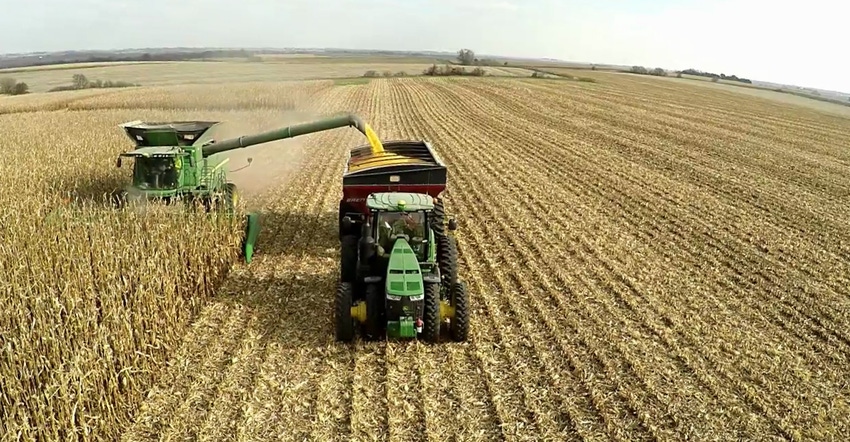January 3, 2018

An Iowa-based company is marketing one of agriculture’s first driverless systems for tractors. Smart Ag, an ag technology firm in Ames, has successfully tested the system that allows existing farm equipment to become autonomous. Smart Ag is taking orders and will sell a limited number of the systems in 2018.
Smart Ag’s technology was demonstrated at a field day on a farm near Plainfield in northeast Iowa in November. MBS Family Farms hosted the event to help introduce AutoCart, a software program. When used with the SmartHP hardware system, it enables a tractor pulling a grain cart to be remotely controlled.
Helps solve farm labor shortage
Kyle Mehmen of MBS Family Farms used AutoCart during the 2017 harvest season with success. As Mehmen navigated his combine through cornfields, he pushed a button and a John Deere 8345R tractor pulling a grain cart came running. With nobody behind the steering wheel, the tractor rumbled across the field and pulled alongside the combine to catch the grain from the auger. With another push of a button, Mehmen sent the driverless grain cart back across the field to unload into a waiting truck.
The system is useful to help farmers deal with a labor shortage that’s driven modern agriculture to move to larger, more complicated machines, says Colin Hurd, CEO of Smart Ag. He founded the company in 2015 to help solve the labor shortage by automating grain carts, creating a system allowing one person to do what typically requires two skilled operators.
Programmed with safety in mind
AutoCart uses navigation technology, allowing the tractor pulling the cart to chart its own path to wherever the combine operator sends it. “The grain cart is programmed to never go anywhere the combine hasn’t been,” says Hurd. “It won’t go outside the area that’s been harvested.”
A tractor equipped with AutoCart won’t run over people or run into other equipment. “The system is able to detect objects,” says Mark Barglof, Smart Ag’s chief technology officer. “The tractor can detect standing unharvested corn; it can detect humans; it can detect vehicles. We’ve programmed it so it can make a safe stop before it hits anything.”
Barglof, a farmer, has found the autonomous grain cart to be safer than having an experienced operator behind the steering wheel. The tractor pulling the cart is synchronized to run beside and react to the combine’s movements.
Autonomous machinery expected to expand
The Smart Ag system works with tractors fitted with autosteer. Today it’s only being offered for Deere tractors and only the newer models — 2000 and newer. “However, as our equipment and technologies expand, as our capabilities as a company grow, we expect to make our system available to work on any color of tractor and on older models, too,” Hurd says.
A 2017 tech industry report predicts unmanned autonomous tractors will become an industry norm. The report estimates 300,000 tractors fitted with autosteer tractor guidance tech of the sort Smart Ag uses were sold in 2016, with that number expected to reach 660,000 by 2027.
About the Author(s)
You May Also Like






